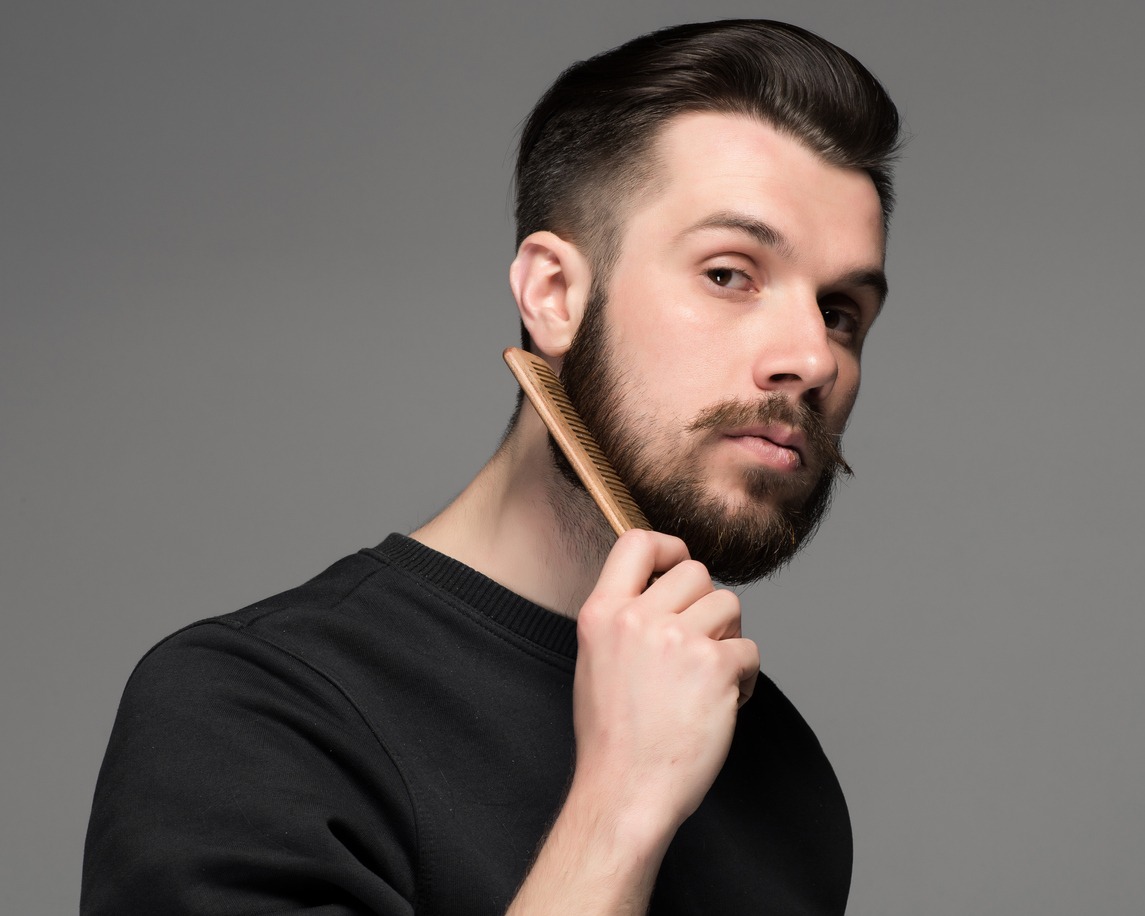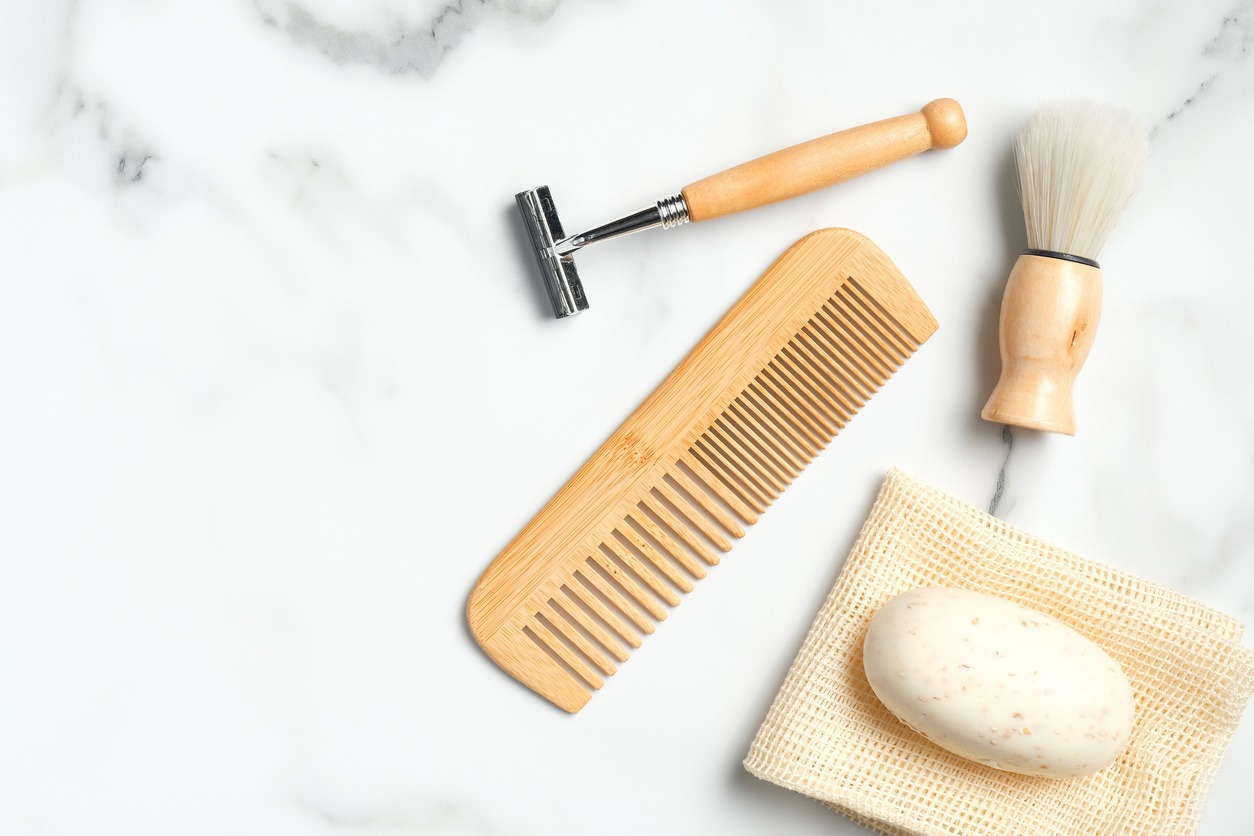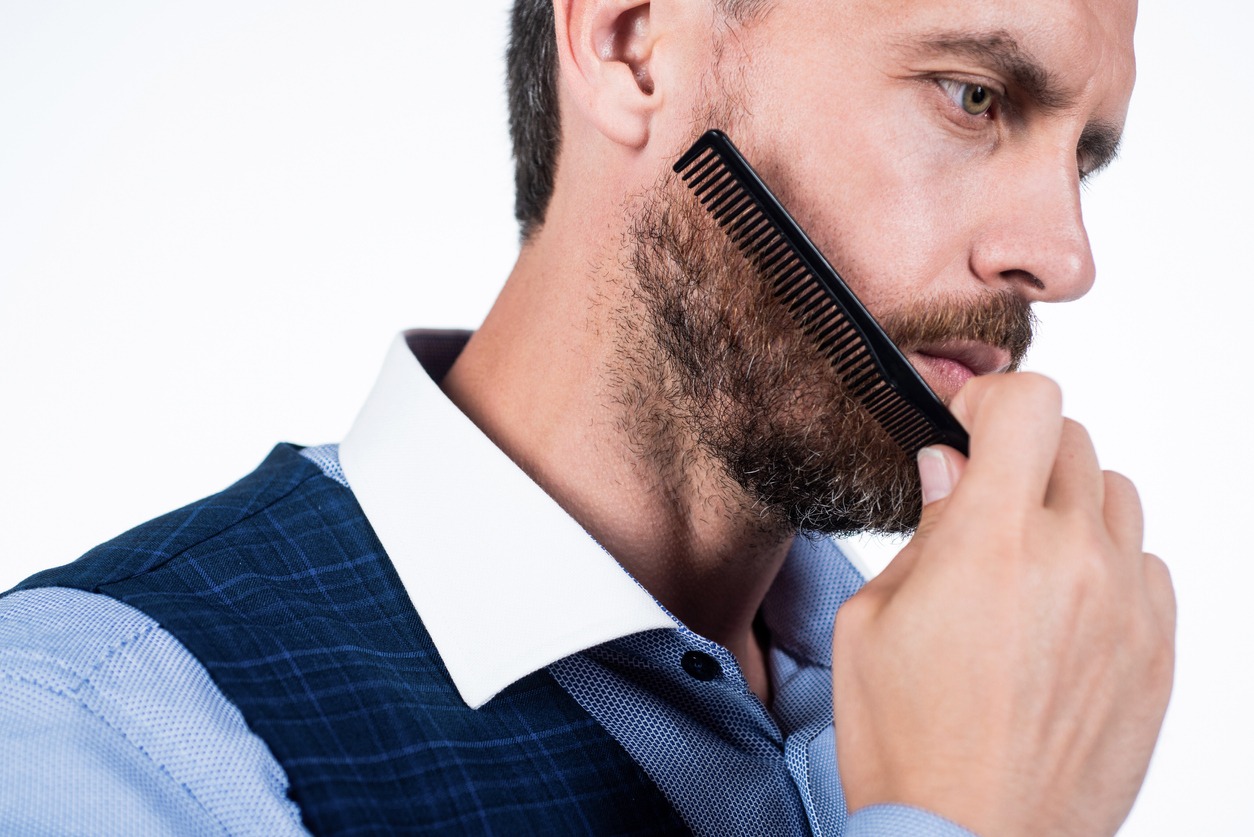Maintaining your beard is essential for many reasons, but perhaps the most important one is that it helps you to look and feel your best! A well-groomed beard can be a true statement piece, and taking care of it can help you to feel confident and stylish. Plus, there’s nothing quite like the feeling of running your fingers through a soft, smooth beard. Not to mention, keeping your beard in good condition can also help you to avoid any embarrassing beard-related mishaps, such as stray hairs getting stuck in your food or a dry, flaky beard causing you to constantly scratch your face.
What better tool to use to give your beard the attention it deserves than a beard comb. In this post, we’ll be discussing the various types of beard combs available on the market, as well as the benefits of using one as part of your beard grooming routine. From plastic to wood, fine to wide teeth, we’ll explore the different options available and help you choose the best beard comb for your needs. Let’s dive into the world of beard combs!
Types of Beard Combs
Wide-Tooth Combs
Wide-tooth combs are characterized by their large, widely-spaced teeth. These combs are typically made of wood or plastic and are designed for use on longer, thicker beards. One of the main benefits of wide-tooth combs is that they are gentle on the beard and scalp, and are less likely to cause breakage or tangles than combs with finer teeth. They are also effective at detangling coarser, more unruly beards, and can help to distribute beard oils and balms evenly through the beard. Wide-tooth combs are a great choice for anyone with a longer, thicker beard, and can be an essential tool for keeping it looking healthy and well-groomed.
Fine-Tooth Combs
Fine-tooth combs have teeth that are closely spaced and often smaller in size than those on other types of combs. Their close spacing allows them to create precise lines and edges in the beard. Fine-tooth combs are also often used to remove tangles and knots from fine or thin beards, as their smaller teeth can more easily navigate through the strands without causing damage or breakage.
Some fine-tooth combs are made with very small teeth and are designed specifically for use on shorter beards, while others have slightly wider teeth and can be used on longer beards as well. However, since beard hair is usually thicker, fine-tooth combs are mostly used for grooming purposes.
Beard Picks
Beard picks, also known as beard needles or beard combs, are typically made of metal and have a handle with a small, pointed comb attached to the end. Beard picks are designed to be used on long beards and are often used to create precise lines and edges in the beard, as well as to remove tangles and knots.
Some beard picks have teeth that are widely spaced, while others have teeth that are more closely spaced and fine-toothed. In addition to their practical uses, beard picks are often chosen for their aesthetic appeal, as their pointed comb design can give a distinctive, stylized look to a beard.
Single-Sided Beard Combs
Single-sided beard combs have teeth on one side (fine or wide) and a smooth or relatively flat surface on the other, which makes them great for creating clean edges in the beard. These combs are also great for removing tangles and knots from the beard, as the teeth can be used to gently loosen and detangle the hair while the smooth side can be used to smooth and straighten it. Single-sided beard combs are typically made of plastic or wood, and come in a variety of sizes and tooth configurations to suit different beard lengths and textures.
Double-Sided Beard Combs
As the name suggests, double-sided beard combs have teeth on either side of the comb with one side being fine and the other usually wide. It is wide and wallet-sized.
Mustache Combs
Mustache combs are specifically designed for maintaining and styling mustaches. They have teeth of various widths and lengths to suit different mustache lengths and textures, and are used to detangle, style, and shape the mustache. Mustache combs can also help to distribute mustache oils through the hair. They are an essential tool for anyone looking to care for their mustache and are often used as a styling accessory as well. Some mustache combs are designed to fold up for easy storage, making them a convenient tool to have on hand at all times.
Heated Beard Combs
Heated beard combs use heat to style and shape beards. They have a built-in heating element that can be adjusted to different temperature settings and are designed to be used on wet or dry hair. Heated beard combs are often used to straighten or smooth out curly or kinky facial hair, and can help to reduce frizz and flyaways.
They are also sometimes used to add volume and body to the beard, as the heat can help to lift and shape the hair. In addition to their styling benefits, heated beard combs can also help to reduce damage to the beard, as they can help to seal the cuticle and lock in moisture. However, it is important to use heated beard combs with caution, as using them in high heat settings or leaving them on the hair for too long can potentially damage the hair or cause burns.
Materials of Beard Combs
Part of learning about the types of beard combs is also knowing what beard combs are made of. Let’s look at some of the most common beard combs materials in this section.
Wood
The most common beard comb material is wood where the type of wood mostly used is sandalwood, cherrywood, or ebony. There are both benefits and drawbacks to wood beard combs:
Benefits
- Inexpensive
- Do not cause static
- Portable as it is small in size
- Environmentally friendly option as they are biodegradable and recyclable
- Help to absorb and distribute oils and balms evenly through the beard as wood is a porous material
- Easy to control
Drawbacks
- Not as durable as combs made of other materials, such as plastic or metal
- Potentially break or splinter if they are dropped or subjected to excessive force
- Not suitable for use on very thick or dense facial hair
- Prone to accumulating dirt and bacteria over time
Metal
Metal beard combs are typically made of stainless steel, which is resistant to corrosion and staining. They may also be made of other types of metal, such as aluminum, brass, or copper. Some metal beard combs may be coated with a layer of another material, such as resin or wood, to give them a more luxurious feel or to add an extra layer of protection against wear and tear. Some metal beard combs may also be made with a combination of different metals, such as a stainless steel frame with brass or copper teeth.
Benefits
- More resistant to breakage and damage than plastic combs
- Gentler on the hair and skin than plastic combs, which can sometimes cause static and snagging
- Easy to clean and maintain, as they can be washed with soap and water or wiped down with a cloth.
- Less likely to gain static
Drawbacks
- While metal beard combs are generally gentler on the hair and skin than plastic combs, they may still be too harsh for some people with very delicate or thin facial hair
- Other types of metal may be more prone to rusting if they are not properly cared for
- May be heavier or bulkier than plastic combs
Synthetic
Synthetic combs are generally the most affordable and widely available type of beard comb. They vary in composition, quality, and price. Synthetic combs can be made up of plastic (petrochemicals) or cellulose acetate (plant-based). Synthetic combs have the issue of gathering static.
Benefits
- More affordable than natural materials like wood or horn
- Generally lighter in weight which can make them more convenient to carry around and use on the go
- Easy to clean and maintain
- Widely available and can be found in a variety of stores and online retailers
Drawbacks
- May be rougher on the hair and skin
- May not distribute oils and balms evenly
- Differing qualities
Benefits of Beard Combs
Helps Cleaning Your Beard
It is important to have a clean beard as an unclean beard can lead to infections and thus making it difficult to grow a beard in the future. The more beard you have, the higher the chances of particles (such as food, dirt, and dry skin) getting stuck in there. Running a comb regularly through your beard ensures that anything stuck in your beard is removed and thus reducing the chances of any infections or other hygiene problems.
Reduces Chances of Ingrown Hairs
Beard combs can help prevent ingrown hairs by gently and evenly distributing natural oils, as well as exfoliating dead skin cells and debris from the beard and skin. When the beard is well-groomed and the hair follicles are clear of excess oil and buildup, the hair is less likely to curl back into the skin and become trapped, which can lead to ingrown hairs. Combing the beard regularly with a beard comb can also help to stimulate blood flow to the hair follicles, which can promote healthy hair growth and reduce the likelihood of ingrown hairs. Moreover, combing your beard regularly steers the hair follicles in the right direction and thus ensuring that the beard grows thick and luscious.
Styles and Trains Your Beard
Beard combs can be an essential tool for styling and training your beard. Combing the beard can help to detangle knots and remove tangles, which can be especially helpful for longer beards. In addition to helping to maintain a well-groomed beard, a beard comb can also be used to shape and style the beard into specific looks or styles. By using different combing techniques, such as combing in different directions or using a wide-toothed comb for a more natural look, you can achieve a wide range of beard styles. Regularly combing and styling your beard with a beard comb can help to train the beard to grow in a desired direction and shape, helping you to achieve the beard style you want.
Helps Moisturize
Beard combs can help moisturize your beard as they can help distribute oil, balms, and waxes easily and evenly throughout your beard. You cannot do much with just your fingers when moisturizing as you are not able to fully reach the skin underneath, and as such, many areas may be missed. As a result, using a beard comb ensures that the moisturizer reaches every part of your beard and the skin underneath in an evenly distributed manner thus moisturizing with a beard comb is effective.
Frequently Asked Questions (FAQs)
1. What are beard combs made of?
Beard combs are mainly made of three materials: wood, metal, and plastic. Each material has its own benefits and drawbacks covered in the article above.
2. How often should I use a beard comb?
The frequency of combing your beard depends on the length and thickness of your beard, however, it is recommended generally that you should use a beard comb at least once a day to keep your beard free of any particles and tangles/knots. However, if your beard is thick, then you should comb it twice a day to keep it nice and healthy.
3. Can beard combs be used on all beard lengths?
Yes, beard combs can be used on all beard lengths. However, the type of beard comb will depend on the length and thickness of your beard. Wide-toothed combs are more suited for men having long and thick beards whereas fine-toothed combs are for men having short beards.
4. Can beard combs be used to style my beard?
Yes, beard combs can be used to style your beard in a variety of ways. By using different combing techniques, such as combing in different directions or using a wide-toothed comb for a more natural look, you can achieve a wide range of beard styles.
5. How do I clean and maintain my beard comb?
To clean and maintain your beard comb, you can use a mild soap or beard shampoo and warm water to rinse off any dirt or debris. Alternatively, you can soak the comb in rubbing alcohol for a few minutes and then rinse it off with warm water.




